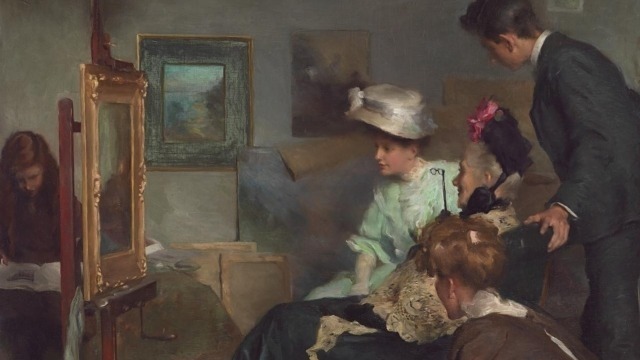Women of Empire with Lara Nicholls
Date & time
Location
Contacts
SHARE

Women of Empire: British-Australian Women Artists and the Transnational Experience, 1885 – 1907 with Lara Nicholls
Join in-person or via Zoom. Link here.
Meeting ID: 874 2742 3972, Password: 764601
The British art critic John Ruskin was known for both his devaluation and championing of certain women artists in the nineteenth century, claiming that in his view, ‘there never having been such a being as yet as a lady who could paint’. Almost a century later in Australia, the art historian Bernard Smith opined in his foundational text, Australian Painting 1788 - 1960, ‘but women, perhaps because of their status in Victorian and Edwardian society and other reasons that need not be discussed here, did not figure prominently in Australian art prior to the First World War.’
Were there so few ‘great’ women artists in England in the late nineteenth century as Ruskin supposes? In Australia were women artists invisible in Victorian and Edwardian society, as concluded by Smith? This thesis is concerned with these questions because, not only does this preconception endure in traditional approaches to art history, but ’greatness’ and ‘invisibility’ are foundational concepts in key feminist texts. Through careful examination of both quantitative data from exhibition and museum catalogues and contextual evidence, I argue that British-Australian women artists in the late nineteenth century were more visible in the imperial art world than has hitherto been documented in accounts of British or Australian art.
The lives and work of the Anglo-Australian women artists discussed in this thesis do not correspond to the notion expressed by the Ruskin that the nineteenth-century woman artist was merely a ‘lady who could paint’. Nor does it correspond to Smith’s description of the late nineteenth-century art world as devoid of women artists. The research in this thesis reveals that women in the late nineteenth century created considerable works of art and competed in the same imperial art world arenas as their male counterparts. Indeed, as women of empire, they were influential global art citizens.











